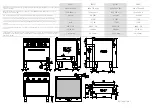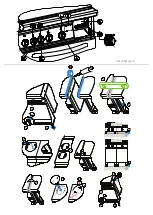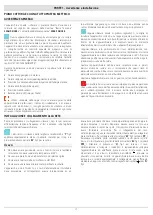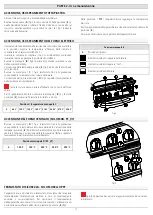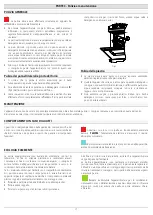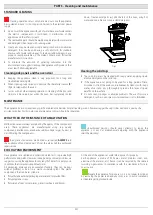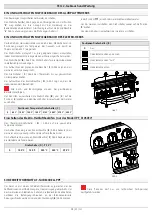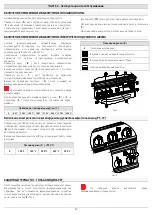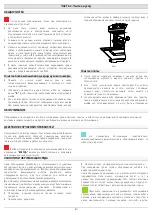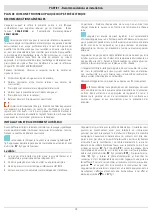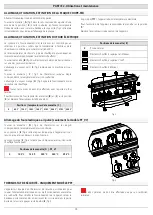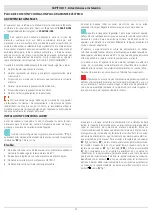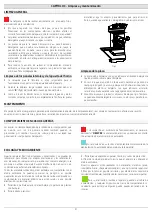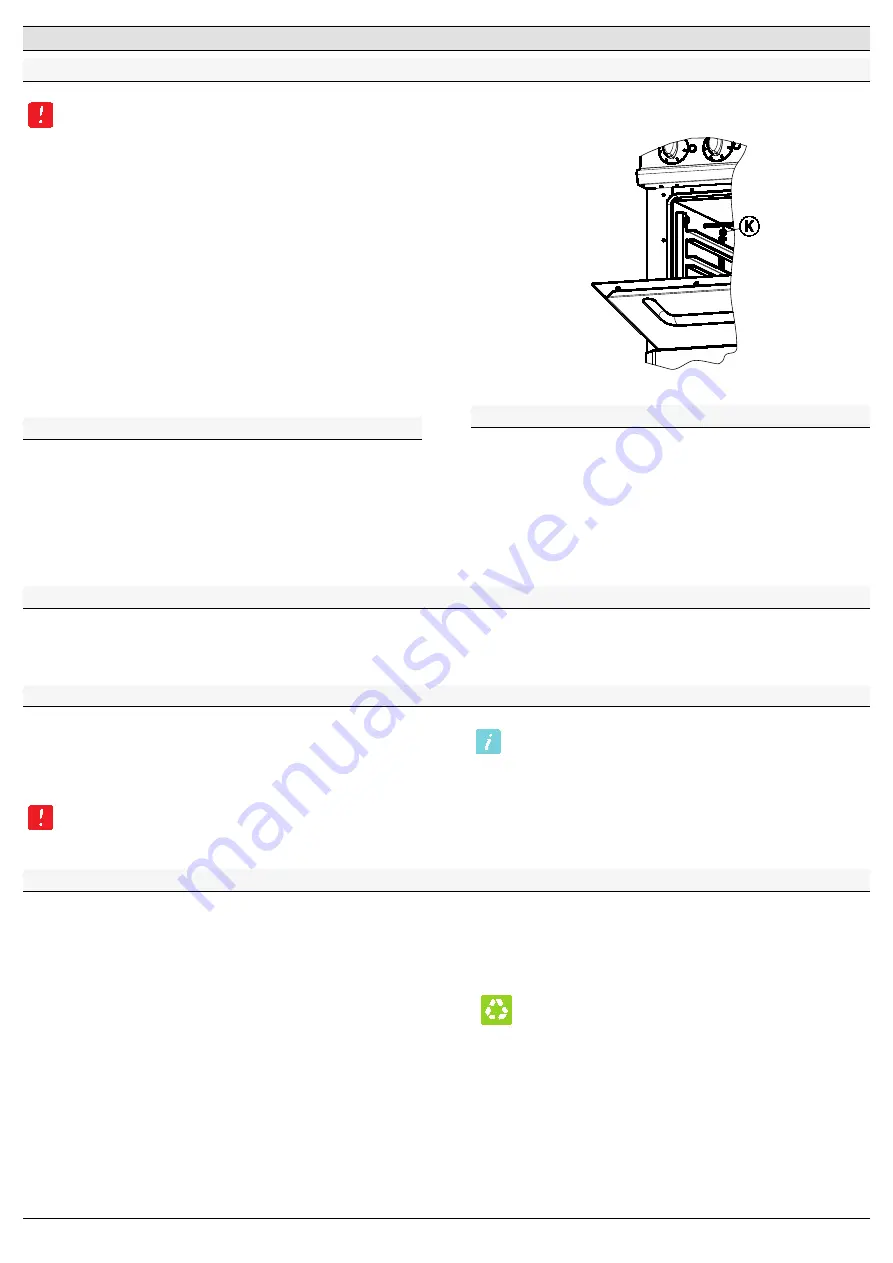
EN
PART 3 - Cleaning and maintenance
STANDARD CLEANING
Cleaning operations must only be carried out once the appliance
has cooled and once it is no longer connected to the electrical power
supply.
Do not wash the appliance with jets of water because if water enters
the electric components it could lead to malfunction of the
appliance and the safety systems!
The removable parts should be washed separately with warm water
and detergent, then rinsed with running water.
Steel parts may be cleaned using a damp cloth and non-abrasive
detergent, they can be dried using a soft, dry cloth; for stubborn
marks, use hot water and vinegar. To remove stubborn deposits, use
products readily available on the market. Where used, follow the
manufacturer’s instructions.
To minimise the emission of polluting substances into the
environment, we suggest cleaning the appliance with products that
are at least 90% biodegradable.
Cleaning side panels and the oven door
Keeping the appliance clean is very important for a long and
trouble-free working life.
When cleaning, take care not to damage the thermostat sensor “
K
”
(fig.3) located within the oven.
Just as with all other cleaning operations, cleaning of the door and
sides must be carried out when the oven has completely cooled
down. Treat enamel parts just like the rest of the oven, using hot
water and non-abrasive or non-acidic detergents.
Cleaning the solid top:
The solid top must be cleaned with soapy water, applying liquid
alkaline detergent on the solid top.
If the appliance is not going to be used for a long period of time,
disconnect it from the mains and subsequently clean it with soapy
water, rinse it and dry it thoroughly. Spread a thin layer of liquid
paraffin on the surface.
Do not use any sponges or abrasive products. The use of corrosive
detergents, such as oven sprays or stain removers is also forbidden.
MAINTENANCE
The appliance does not require any specific maintenance besides normal cleaning; we do however suggest having it checked once a year by the
assistance centres. For this purpose a maintenance contract should be stipulated.
WHAT TO DO IN THE INSTANCE OF A MALFUNCTION
Malfunctions are not always explained by the quality of the components
used. These appliances are manufactured using top quality
components. Malfunctions may be caused by voltage surges, by dust or
dirt infiltrating the components.
In any case, if anomalies are noticed or suspected,
ALWAYS
turn
the appliance off and disconnect it from the mains.Call the authorised
repair service.
Unauthorised persons should never attempt to repair the
appliance, or carry out maintenance.Tampering with the appliance
voids the warranty!
ECOLOGY AND ENVIRONMENT
Our appliances are studied and optimised via lab tests, to provide high
performance and yields. However, to keep energy consumption low we
suggest not using the appliance for any length of time if it is empty or in
conditions that compromise optimum yield.
All packaging materials are environment-friendly. They can be kept
without problem or burnt in a waste incinerator plant. The plastic
components that can be recycled are:
Polyethylene: external packaging material and/or pluribol film.
Polypropylene: straps.
Polystyrene foam: corner pieces, protective sheets and blocks.
At the end of the appliance’s useful life, dispose of it properly.
Each appliance is made of 90% plus metal (stainless steel, iron,
aluminium sheet metal, etc.) hence it can be recycled by the relative
recycling organisations in compliance with the standards in force in
your country.
Prepare the appliance for disposal, so it is no longer functional,
by removing the power lead and any locks so as to avoid somebody
accidentally getting locked inside.
Fig.3
Summary of Contents for TECNO70
Page 4: ...Fig 2 Abb 2 рис 2 ...



